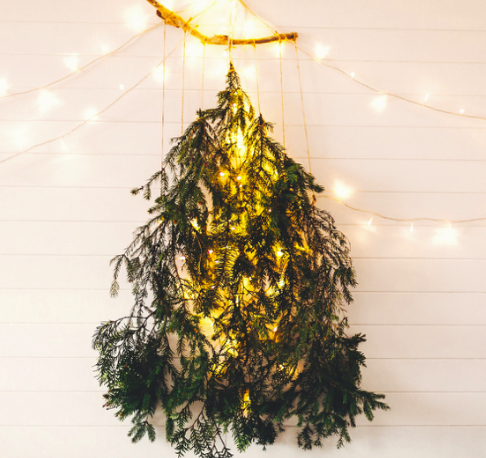For those of us planning to celebrate Christmas this year, we’re all on the lookout for the perfect Christmas tree.
One of my fondest childhood memories is of picking up the Christmas tree, getting out the old box of Christmas decorations from the garage and decorating it with colourful lights and baubles.
When I was a kid, our whole family used to pile into the car and go for a pre-Christmas road trip –- we would drive around the countryside on the lookout for a suitable small pine. My parents would take a small saw hidden in the boot and cut down the little tree – sneakily stashing it in the back of the car wrapped in a tarpaulin. It was a treasured childhood memory of Robin Hood-esque shenanigans.
Of course, stealing Christmas trees from the side of the road is not something that I would legally go on the record to recommend for you. But it just goes to show the lengths that some people will go for the right tree.
But while chopping down a baby tree might not be the best thing for the forest, it’s certainly better than rushing to the shops to buy a plastic one every December.
So if you care about the planet, you probably want to know – what type of tree is the best for the environment?
1. Living trees/pot plants
Living trees are by far the best for the environment. Live trees are carbon sequestering machines, cleaning the air and creating natural habitats for wildlife. And having plants has myriad benefits not just for the earth, but for your own wellbeing. These plants are not just used as a one-off, but can be cared for all year round. Many people decorate their existing plants with lights, but the most popular choice for a tree that’s more in the Christmas spirit is the Norfolk Pine. Or, you could deck the halls with a native Australian pine like a Woolly Bush, or even a festive Bush Christmas lilly pilly.
2. Rent a tree
Buying your own tree may be the best option, but did you know that you can rent a tree instead? If you don’t have enough space, or don’t have a natural green thumb, then renting a tree might be the best option for you. Live potted plants, or recently harvested trees, can be rented from a number of organisations. They will sometimes deliver straight to your door and pick up after Christmas is over.
3. Cut tree 
The next best option is a “living” cut tree, which provides the same green look and fresh scent as a potted pine tree. You can get these at a number of places, and some suppliers even organise tree auctions with the proceeds donated to charity. Just make sure you’re sourcing your tree from a responsible grower! In order to make sure it doesn’t go into landfill though, you’ll need to properly dispose of your tree after the silly season is over. You can compost it, or (if you live in Sydney) you can dispose of your tree in a Green Waste Bin. Just ensure that it’s been cut up into 30cm lengths, and that the lid of the bin can be completely closed when it’s collected.
4. Fake tree
If you must, then you must. Buying a fake Christmas tree may be the only option for you if someone in your family has allergies or you simply don’t like the smell. But in order to make this decision as gentle as possible on the environment, you will need to use this same fake tree for at least 10 years until it becomes better for the environment than a real one, in terms of carbon emissions.








